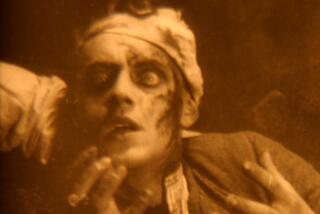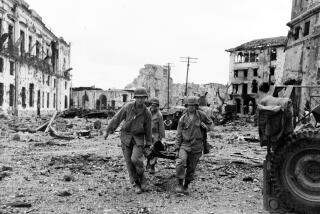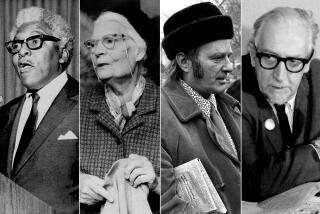War Without Mercy : RACE AND POWER IN THE PACIFIC WAR by John Dower (Pantheon: $22.50; 317 pp.)
World War II has meant different things to different people. Terms such as fighting for a noble cause, a mission to propagate the finest cultural values , of a war to combat tyranny and oppression, and a struggle to preserve freedom and democracy reflect one point of view. Others saw the struggle in political-economic terms, while for many of the victims, no matter what side, the war meant death and destruction. But there seems to be a consensus that it was our last âjust war,â implying that the âgood peopleâ were fighting the âevil ones,â and that the foe could be clearly defined and ultimately destroyed.
John Dower presents another point of view, probably not the most popular at the present time, that the fight against the Japanese was primarily a ârace war.â Gathering data from songs, slogans, propaganda reports, secret documents, Hollywood movies, the mass media and quotes from soldiers, leader and politicians, he effectively illustrates his theses. Data from the enemy is also presented, and the picture is depressing, but familiar. Two cultures, with minimal contact, see each other in stereotypes, each believing its ways superior and its causes just, with leaders using their most persuasive techniques to heighten prejudice and to promote further discord. If left alone, each culture would have a residue of hate and hostility toward each other, but given actual combat conditions where actions beget counteractions, the results were disastrous. Acts of atrocious cruelty and slogans of total annihilation were common, with seemingly rational explanations justifying the carnage as preserving oneâs way of life.
The book is divided into four sections: Part I on the patterns of a race war; Part II on the war as seen by Western eyes; Part III on the war as seen by Japanese eyes; and the final part, an epilogue. The point-counterpoint scenario, as the two cultures misunderstand, misperceive, misinterpret and attempt to justify the destruction of each other is skillfully done.
A favorite label was to view the Japanese as monkeys, adding, for emphasis, the adjectives, âlittleâ and âyellow.â They belonged to an inferior race; myopic, pint-sized, slavish imitators, poor jungle fighters, inept pilots, timid strategists and unimpressive navigators. But when the Japanese easily overran Southeast Asia, the image changed to âsupermen.â As Dower indicates, the Japanese were initially seen as inhuman, subhumans and lesser humans; as they began to win victories, they became superhumans. They were never seen as plain humans.
Japanese views of their superiority have also had a long history. Believing that their lineage could be traced back to God and that they belonged to a pure and virtuous race, they practiced their form of racial superiority, albeit against neighboring countries of their own race, which in practice was little different from European colonial models. The Americans were seen as beasts, barbarians and ultimately as ogres and demons. The Japanese dehumanized their enemy, just as we did them.
In armed conflict, the images and stereotypes collided; each side attempted to slaughter to the last man; it was kill or be killed, a fight with no quarter asked or given. Cruelty and atrocities were common; ears were taken off the Japanese dead; skulls became collectorâs items, and the gold teeth of soldiers were yanked out even while some were still alive. Flame throwers left screaming victims; the taking of live prisoners was discouraged; parachuting fliers were machine-gunned; the scenario of a race war justified such actions. Nagasaki too can only be understood in the context of a race war. As the author comments, the war against the Japanese was against an evil race, whereas the war against Germans was against evil individuals so that there were âgoodâ Germans, but no âgoodâ Japanese.
In the epilogue, the author attempts to answer why the race war turned into such a peaceful occupation. One obvious answer was that each side found in daily, close contact, that the stereotypes of each other were not true. The Japanese were not monkeylike beings, just as Americans were not demons. Another explanation saw the Japanese acknowledging their error of challenging the power of older, more established imperial nations and willing to adjust to their proper place in the world society. It should also be noted that at this time, there was the threat of a new Asiatic power, Red China, and it comes as no surprise to see how easily the old stereotypes were used to fit the new enemy.
More to Read
Sign up for our Book Club newsletter
Get the latest news, events and more from the Los Angeles Times Book Club, and help us get L.A. reading and talking.
You may occasionally receive promotional content from the Los Angeles Times.









